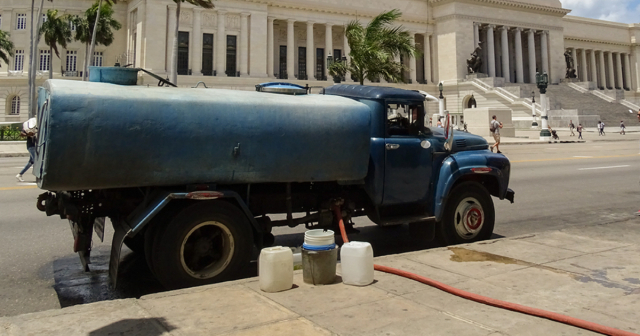More than 600,000 Cubans currently have no access to potable water supply services, and the Institute of Hydraulic Resources blames the energy crisis affecting the country.
The president of the Water and Sanitation Business Group, José Antonio Hernández Álvarez, acknowledged that the water supply is in a critical situation in Cuba but assures that the main problem is the continuous power outages that cause failures in the pumping system.
The situation is especially complex in Havana, where more than 130,000 people have been affected for days by the water shortage.
Hernández insisted that the crisis of the National Electroenergetic System (SEN), with multiple breakdowns in the main thermoelectric plants, has been one of the key factors exacerbating the water supply problem.
Power outages disrupt the operation of pumping equipment, and when the electrical service is restored, it can take up to four hours to pressurize the system and resume normal water distribution.
In Havana, the crisis has been centered in the areas supplied by the Southern Basin, which feeds municipalities such as Plaza de la Revolución, Centro Habana, Habana Vieja, and Diez de Octubre.
The official said that they have already managed to reactivate 16 of the 19 necessary pumping units, but difficulties persist in areas such as Marianao and Playa, where failures in key equipment have complicated the situation.
The provinces of Pinar del Río, Artemisa, Santiago de Cuba, Granma, Villa Clara, Cienfuegos, and Holguín are also facing interruptions in the water supply, complicating the living conditions in the homes of hundreds of thousands of families who depend on this basic service.
The government says it has launched a strategy to address this crisis, prioritizing areas with the highest number of affected population, but the results are not evident in many territories.
The scarcity of resources and the lack of fuel make it difficult to distribute water by tanker trucks to the most affected areas. A water truck can cost over 8,000 pesos in the capital.
The lack of drinking water is a major problem that affects the daily lives of hundreds of thousands of Cubans. Authorities have announced that they will continue to work even on weekends to try to mitigate this situation, although definitive solutions seem to be far from being reached.
What do you think?
COMMENTFiled under:






